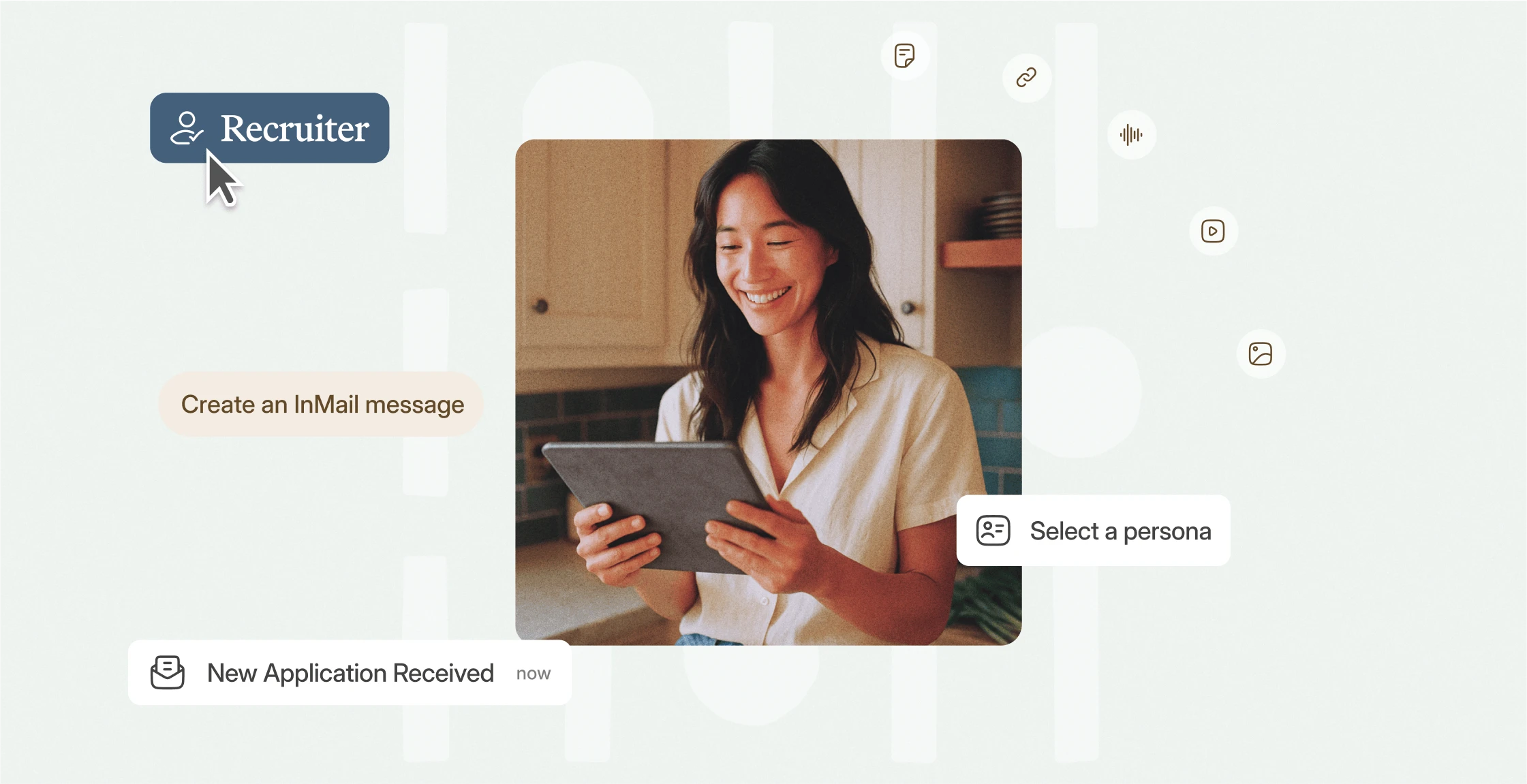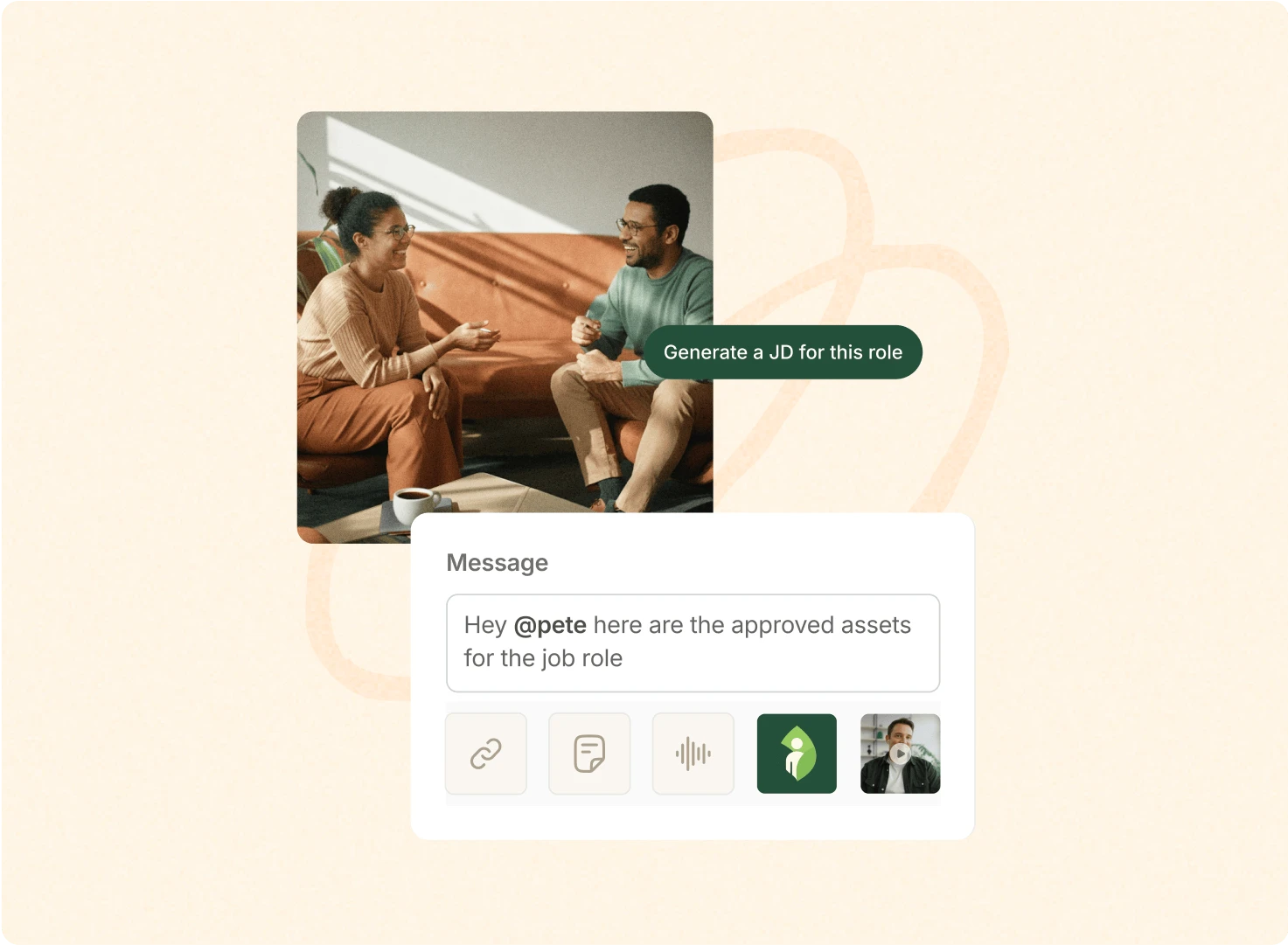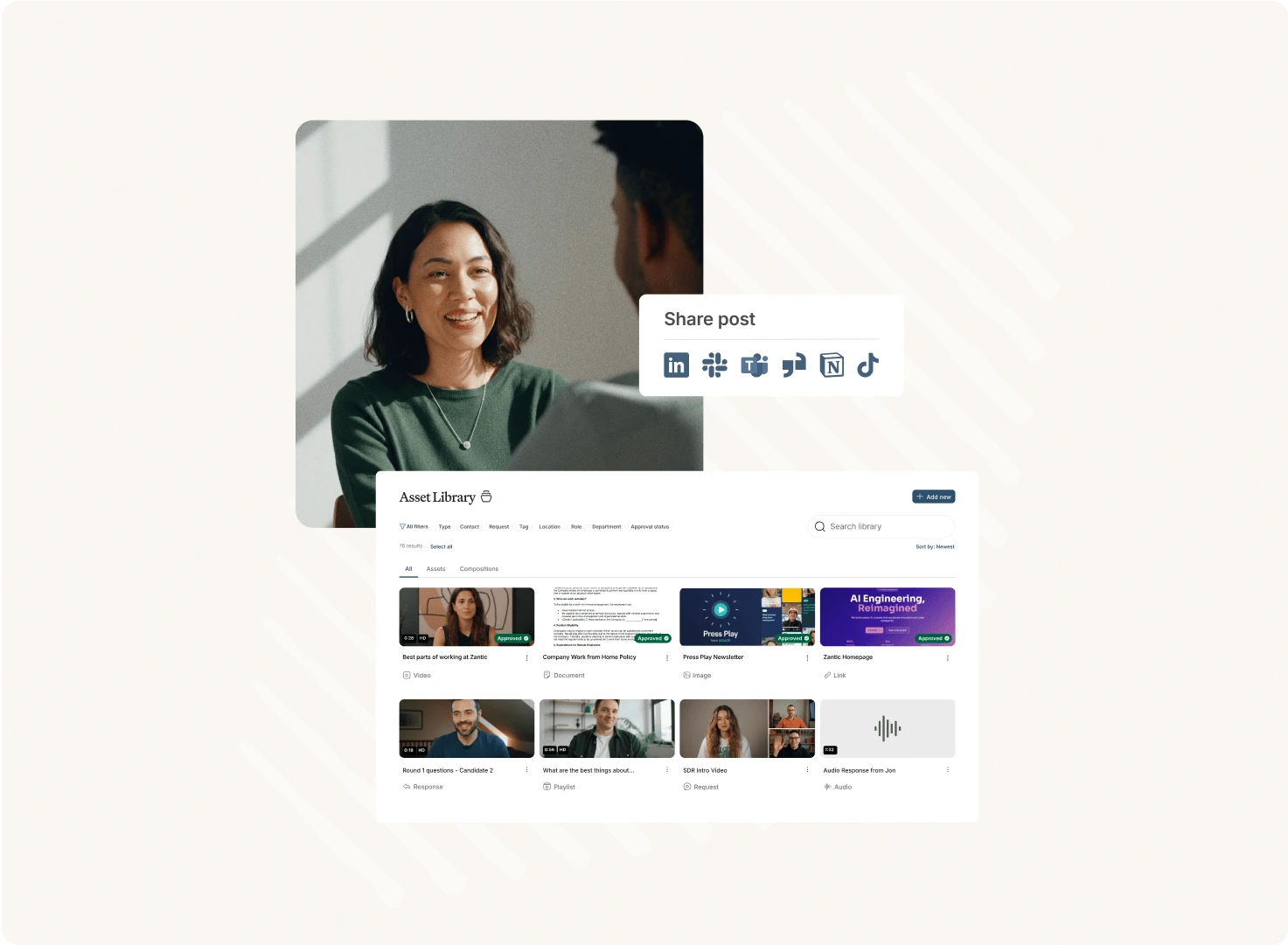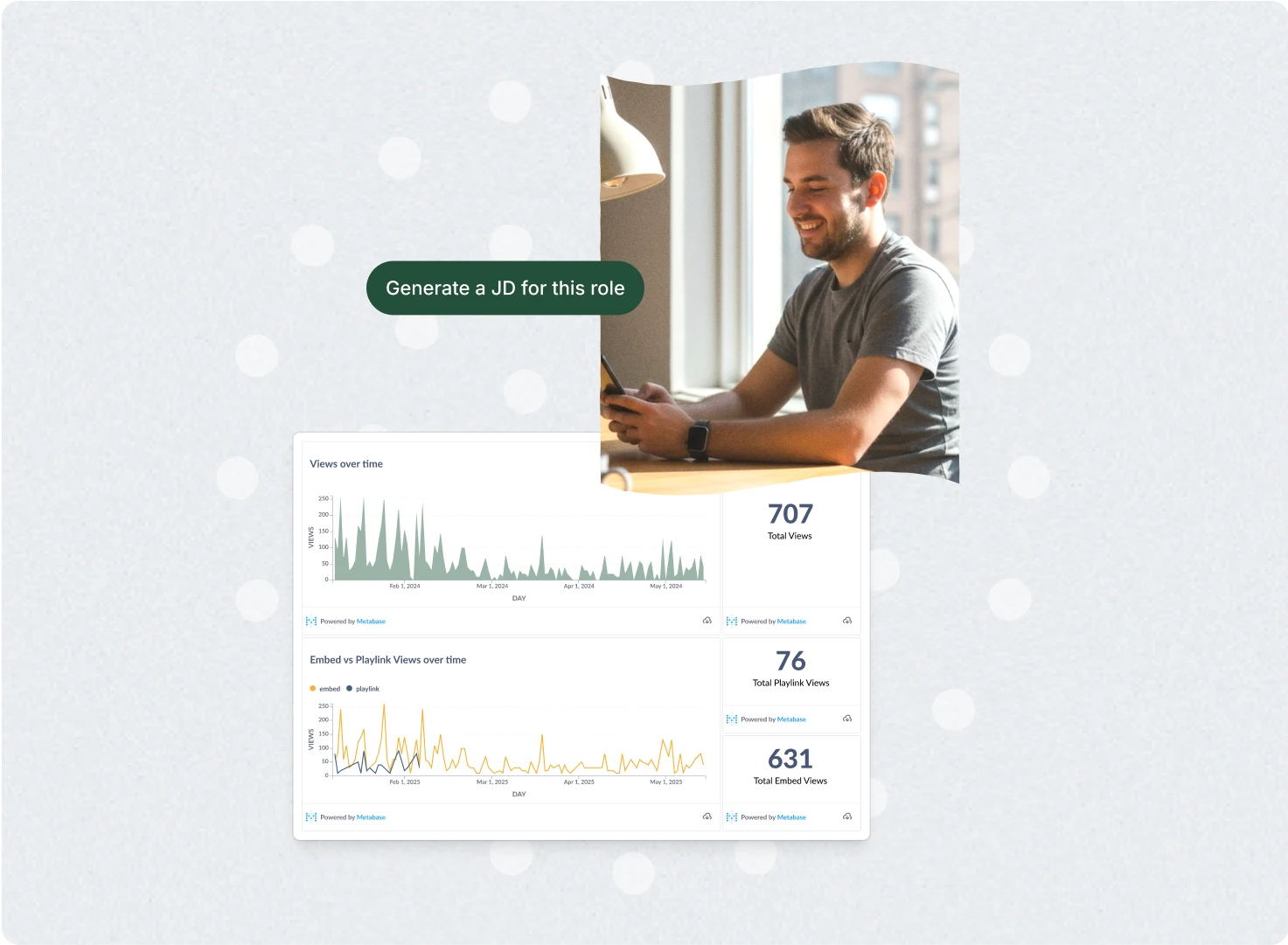Full-cycle recruiting, also known as life cycle recruiting, is a comprehensive approach to hiring where a single recruiter or a recruitment team manages the entire process with no outside or marketing team help - from sourcing candidates to onboarding new hires.
The interesting part of full-cycle recruiting is that this method is common at both ends of the "recruitment bell curve", from small businesses where resources are limited to larger organizations that bring everything in-house for a more consistent candidate experience.
At its core, full-cycle recruiting is about ensuring that each step of the hiring process is handled with attention to detail - to improve hire quality, retention and employer branding.
Let's dive in.
What Are The 7 Steps Required For Full-Cycle Recruiting?
When looking at what full-cycle recruiting is, it's often easy to miss crucial steps that live in a recruiter's mind.
That's why recruitment enablement is so important, where you have an internal content library that explains each step and more.
For most companies, however, there are seven core stages of full-cycle recruiting consisting of:
1) The Preparation Phase
This phase is made up of crafting a job description, understanding job requirements and position materials, including personalized videos for roles. The preparation stage is all about making sure you have an ideal candidate profile or candidate persona.
2) Sourcing Candidates
For smaller companies, job boards, social media platforms, employee referrals, and other sourcing channels can be used to attract potential candidates. For larger companies, this is turned up, and through employer branding, larger companies are able to create high demand for open positions.
3) Screening and Shortlisting
The screening phase includes conducting initial screenings, candidate interviews, and creating a shortlist of qualified candidates. This part of your full-cycle recruiting strategies can often be the most time-consuming, and where tools like Vouch can help.
4) Interviewing
Managing the interview process, often involving multiple rounds and interview panellists, setting candidate skills tests and candidate assignments, and then gathering candidate feedback.
5) Selection and Hiring
When it comes to candidate selection within the full life cycle recruitment process, performing background checks, reference checks, and making hiring decisions - AI can help significantly in 2026, especially if you have limited recruiter capacity.
6) Preboarding and Onboarding
Transitioning new hires smoothly with pre-boarding and the onboarding process ensures a seamless experience and also creates a remarkable employee in the first few weeks. Great onboarding lasts a lot longer than a week. Here's a great article.
7) Employee Brand & Funnel Building
Recruitment today needs to be much more active than posting positions and hoping for the best. Today, leading companies are actively attracting candidates through their employer brand, and this is a whole discipline in itself. You learn about some of the reasons for doing EB here.
Implementing full-cycle recruiting ensures that your recruitment process remains consistent and aligned with company culture, company values, and specific job requirements.
The AI-enabled workspace for talent teams.
- Unified workspace for talent teams
- Accelerate hiring with AI tools
- Auto-generate polished hiring and employer brand content
- Easily repurpose assets across all channel
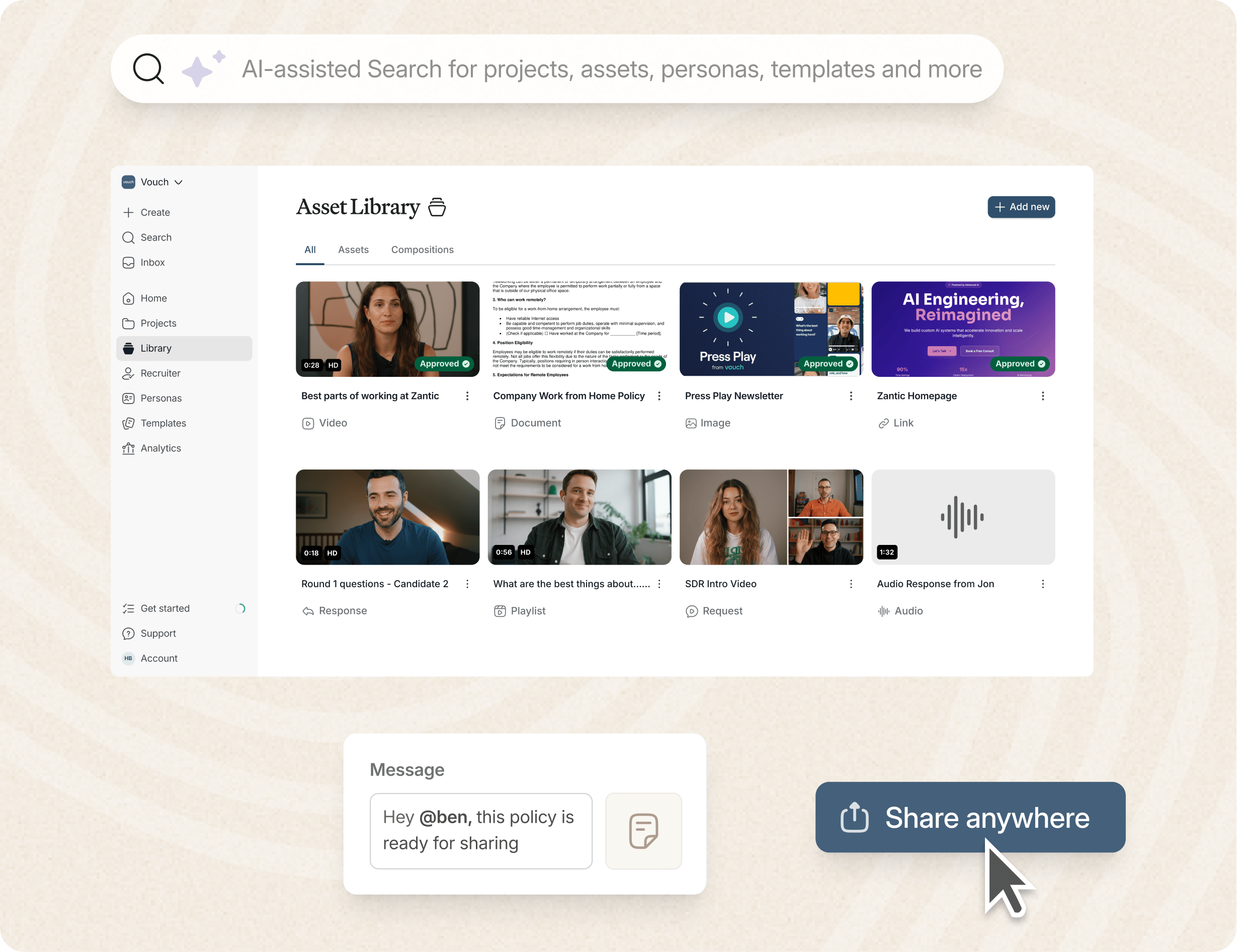
How Is AI Transforming Full-Cycle Recruiting?
In the last 2 years, artificial intelligence has become an essential tool in the recruitment industry, revolutionizing how companies approach talent acquisition.
Here’s how AI is helping full-cycle recruiting:
1) Enhanced Candidate Sourcing
AI-powered recruitment tools use data-driven approaches to identify suitable candidates across a broad skill spectrum. By scanning online platforms, job boards, and even passive candidates on social media, AI can quickly build a pool of high-quality candidates. For example, LinkedIn’s Recruiter tool utilizes AI algorithms to match recruiters with ideal candidates based on specific job titles and qualifications.
Stat: In 2024, 67% of recruiters are using AI for sourcing candidates, according to LinkedIn's Global Recruiting Trends Report.
2) Improving Screening Efficiency with AI
Screening resumes can be a time-consuming process, especially for larger companies with hundreds of applications. AI tools, like applicant tracking systems (ATS) and video recruitment tools like Vouch, leverage AI and streamline this process by automatically filtering candidates based on keywords, experience, and skills. AI-based screening eliminates poor candidates early on, helping recruiters focus on qualified applicants.
Stat: According to Gartner, 78% of companies using AI-powered screening report a 40% reduction in time-to-hire.
3) Data-Driven Candidate Assessments
AI allows recruiters to use pre-employment assessment tools that evaluate both technical skills and personality traits. For example, platforms like Pymetrics assess cognitive and emotional traits, which help in determining if a candidate fits beyond technical qualifications. This data-driven approach enables recruiters to make more informed decisions.
Stat: A report by SHRM found that 63% of HR professionals believe AI-driven assessments improve the quality of hire by identifying candidates with the right personality traits.
4) Streamlined Interview Scheduling and Coordination
Scheduling interviews, especially with multiple interview panellists, can be a logistical challenge. AI tools such as Calendly and x.ai automate this part of the recruiting cycle, allowing candidates to book interviews based on the recruiter’s availability. This structured process reduces the risk of miscommunication and improves candidate engagement.
Stat: By using AI for scheduling, companies reduce interview scheduling time by 85%, according to Forbes.
5) Enhancing the Candidate Experience with AI Chatbots
AI-powered chatbots, while you need to tread with ease, play a vital role in candidate engagement by providing timely updates and answering frequently asked questions throughout the recruitment life cycle.
This proactive approach keeps potential hires informed, creating a more personalized experience for candidates.
Chatbots also ensure a consistent process and reduce the time recruiters spend on repetitive queries - but you need to use them carefully of course to not remove the human element from your recruitment team.
Stat: TalentLyft reports that 80% of job seekers say they appreciate timely updates during the recruitment process, with AI chatbots improving engagement by up to 50%.
What Are the Benefits of Full-Cycle Recruiting for Companies?
Full-cycle recruiting offers a multitude of benefits for organizations of all shapes and sizes, taking into account the entire recruitment process in a simple step-by-step way. By incorporating a full-cycle recruiting process with AI support, companies can significantly improve hiring efficiency, quality of hire, and overall candidate experience.
This comprehensive approach to talent acquisition is quickly becoming a standard in the recruitment industry, helping organizations make informed, data-driven decisions while enhancing their company culture and employee satisfaction.
Here are the key benefits to full-cycle recruiting:
Consistency: Provides a consistent candidate experience across the entire hiring process.
Efficiency: Streamlines the process by assigning a dedicated recruiter or recruitment team.
Improved Quality of Hire: Allows for a comprehensive assessment of candidates’ qualifications, skills, and cultural fit.
Better Candidate Engagement: Keeps candidates engaged from the sourcing phase to onboarding.
Scalability: This holistic recruitment process can adapt to mid-size companies and larger organizations alike.
FAQs
What is full-cycle recruiting?
Full-cycle recruiting is a process where a single recruiter or team manages every stage of hiring, from sourcing to onboarding.
Why is AI important in recruiting?
AI helps automate time-consuming tasks, improves candidate sourcing, and provides data-driven insights for better hiring decisions.
How does full-cycle recruiting benefit larger companies?
It ensures consistency, improves the candidate experience, and allows for efficient handling of multiple roles.
Can AI really improve candidate quality?
Yes, AI-driven assessments and screening tools help identify high-potential candidates who match the ideal profile.
What tools are commonly used in full-cycle recruiting?
Popular tools include ATS systems, AI chatbots, candidate scorecards and scheduling automation tools.
How does full-cycle recruiting impact employee retention?
A structured, consistent hiring process improves employee satisfaction and retention by ensuring better job fit.
Is full-cycle recruiting suitable for specialized roles?
Yes, it’s effective for both general and specialized roles, as it allows for thorough assessment and personalized engagement.
Vouch Improves Your Entire Recruitment Cycle
Loved by companies like Canva, Nike, Cisco, HubSpot, Amazon, and more, tools like Vouch make leveraging video in your business and recruitment remarkably easy.
Be sure to book a Vouch demo today and chat with a video content expert.
You might also like

Elevate Your Brand Today With Vouch
Discover how Vouch can accelerate talent acquisition while helping you stay on-brand.


